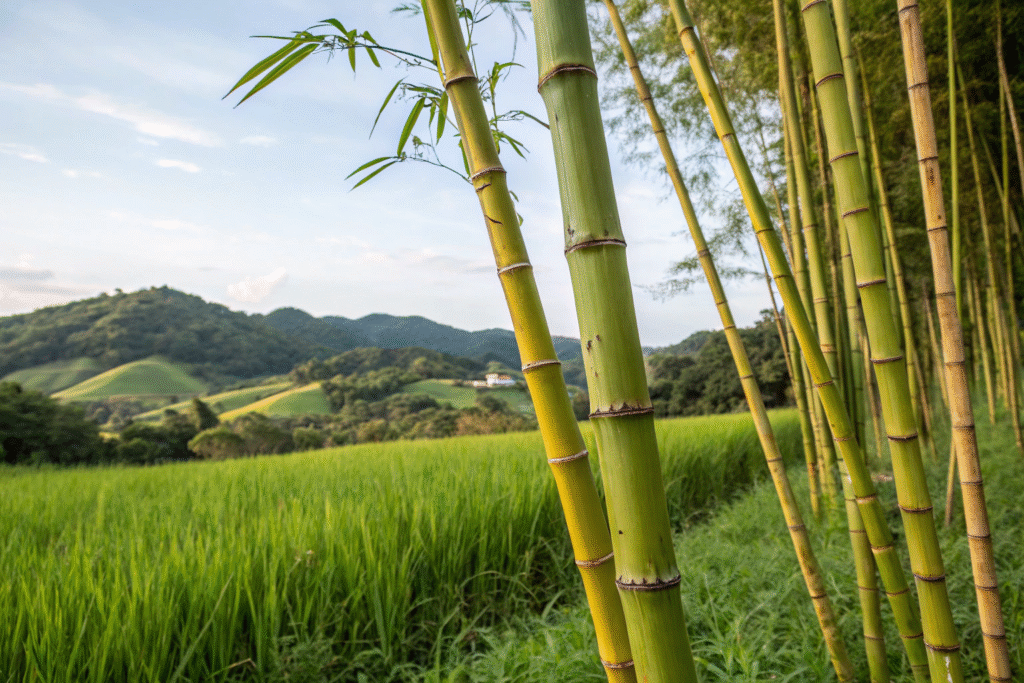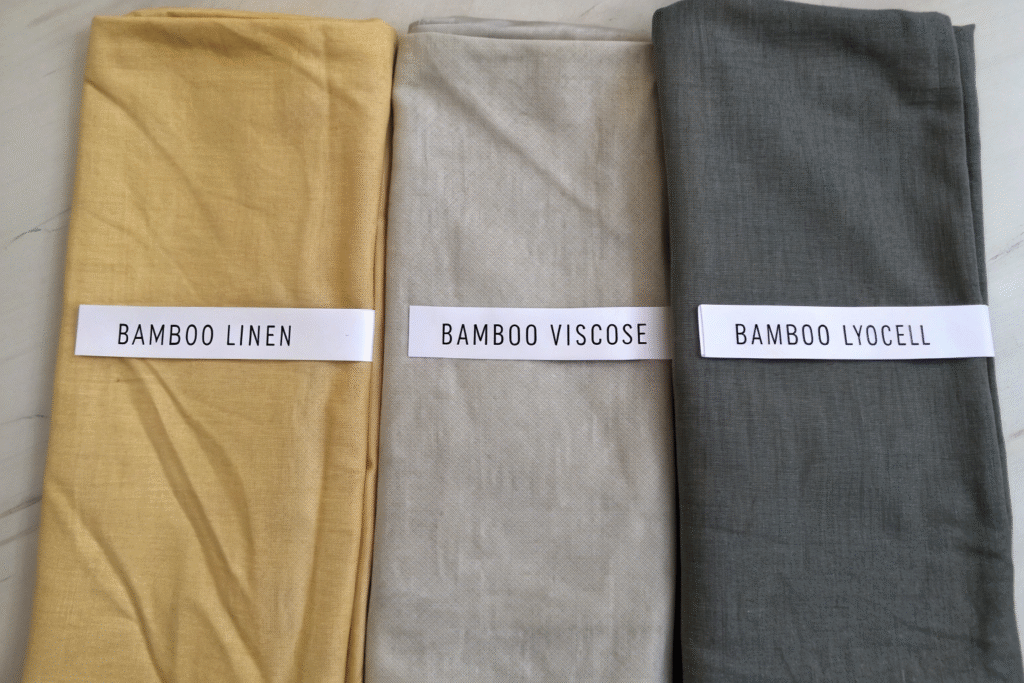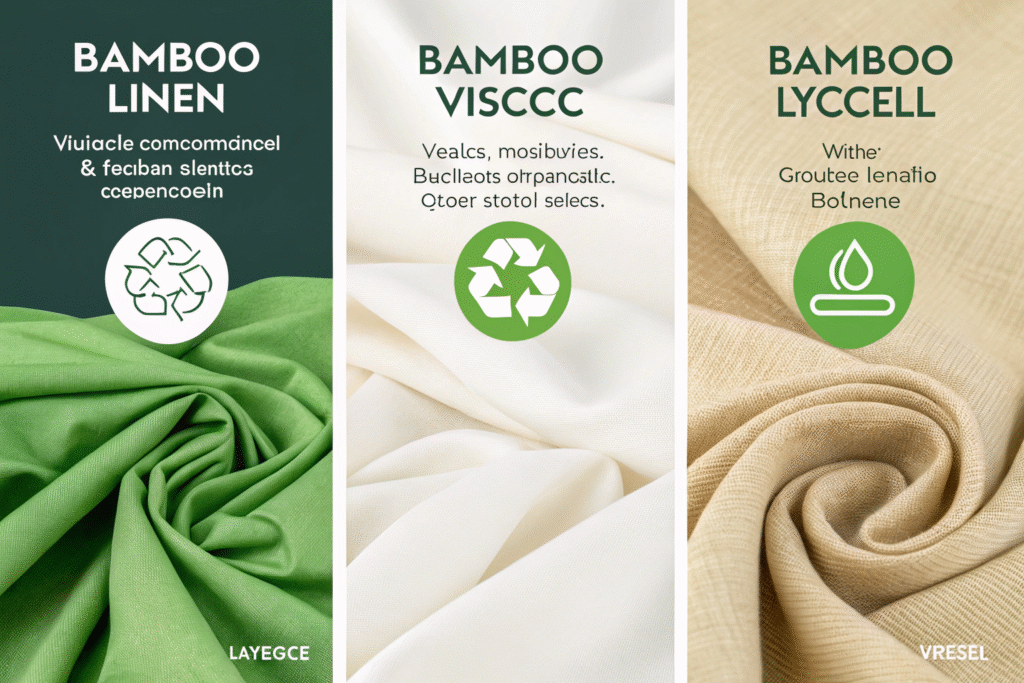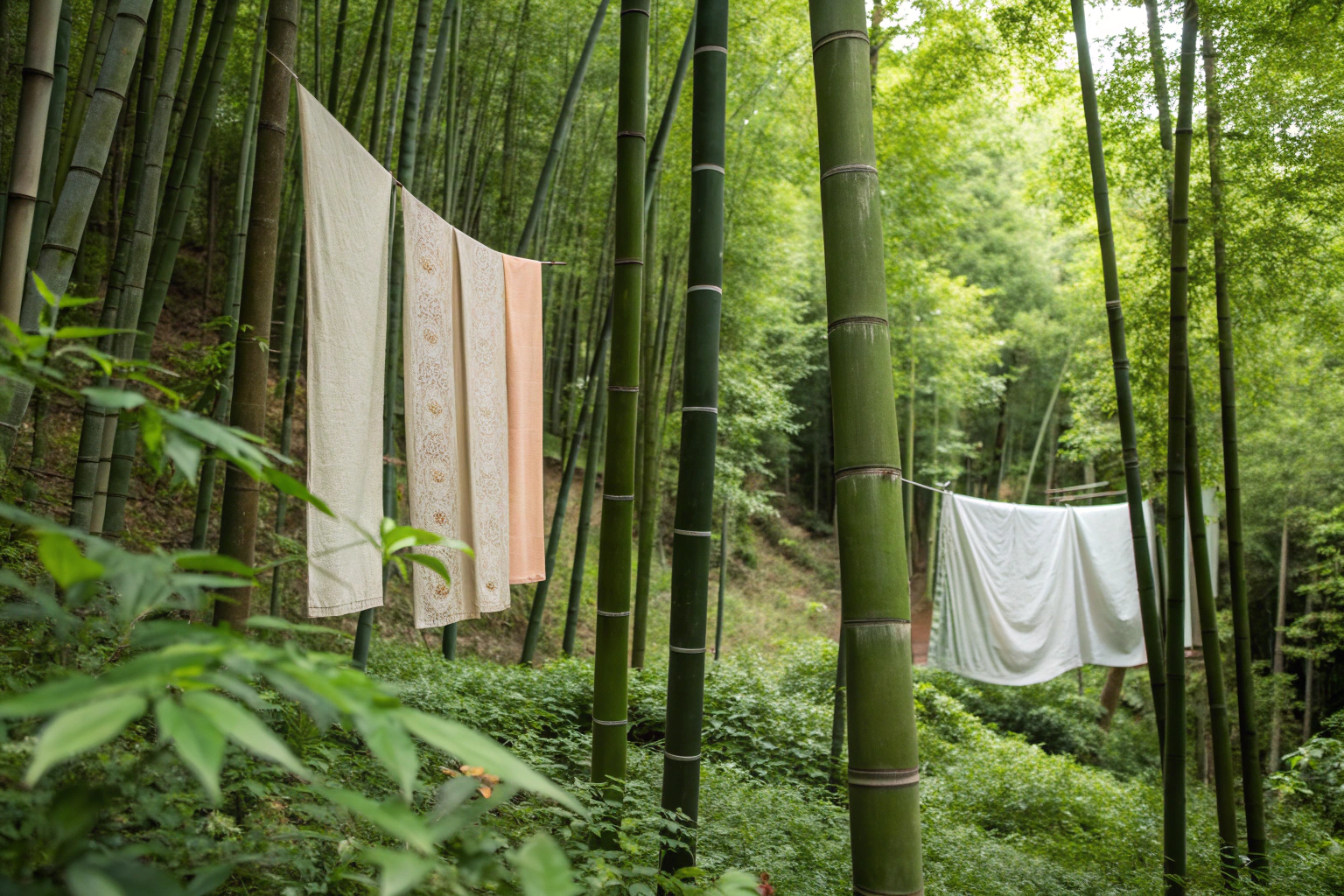Bamboo has been widely marketed as a “green” solution in the textile industry. Its fast growth, low water needs, and natural antibacterial properties make it sound like an ideal resource for eco-fashion. However, sustainability is not determined only by the plant itself. The way bamboo is processed into fabric ultimately decides whether it is truly eco-friendly.
Bamboo fabric can be sustainable, but the environmental impact depends heavily on the production method. Bamboo linen, bamboo viscose, and bamboo lyocell each represent different levels of sustainability. Understanding these variations helps buyers and brands make informed choices.
Why Is Bamboo an Appealing Raw Material?
Bamboo has unique biological advantages that make it one of the most sustainable plants available for textile use. Because it grows quickly and requires little maintenance, it places minimal strain on the environment.
As a crop, bamboo offers clear benefits that explain why it is considered sustainable at the source.

Benefits of Bamboo Cultivation
- Rapid Growth: Reaches maturity in just 3–5 years, compared to decades for trees.
- Minimal Water Use: Consumes far less water than cotton, which is a water-intensive crop.
- No Pesticides: Naturally resists pests, avoiding chemical treatments.
- Carbon Sequestration: Absorbs more CO₂ than many other plants, improving air quality.
Because bamboo grows fast with little human intervention, it represents a highly renewable raw material. However, sustainability must also consider how this raw material is transformed into fabric.
What Are the Different Types of Bamboo Fabrics?
Not all bamboo fabrics are produced in the same way. Although they all begin with bamboo pulp, the processing method determines the fabric’s final qualities and environmental footprint.
The three main types of bamboo fabrics are bamboo linen, bamboo viscose, and bamboo lyocell.
![]()
Bamboo Linen (Mechanical Process)
- How It’s Made: Bamboo stalks are mechanically crushed and the fibers are spun into yarn, similar to flax being turned into linen.
- Eco Impact: Very eco-friendly because no harmful chemicals are used.
- Pros: Strong, durable, biodegradable.
- Cons: Coarse in texture, labor-intensive, and costly. Rarely used in large-scale apparel.
Bamboo Viscose (Chemical Process)
- How It’s Made: Bamboo pulp is dissolved in chemical solvents, such as carbon disulfide, to create regenerated cellulose fibers.
- Eco Impact: Production involves hazardous chemicals and can damage ecosystems if waste is not treated.
- Pros: Soft, breathable, and affordable, which explains its popularity.
- Cons: Raises environmental and worker-safety concerns.
Bamboo Lyocell (Closed-Loop Process)
- How It’s Made: Uses a closed-loop system similar to Tencel (Lyocell), recycling over 99% of solvents.
- Eco Impact: Highly sustainable, with minimal emissions and safe handling of chemicals.
- Pros: Soft, strong, and eco-friendly.
- Cons: Less common in the market and more expensive than bamboo viscose.
Industry certifications like OEKO-TEX highlight that only bamboo fabrics produced responsibly—particularly bamboo lyocell—can be considered truly sustainable.
Is Bamboo Fabric Eco-Friendly in Practice?
The environmental story of bamboo fabric depends on which type dominates the market. At present, most bamboo apparel is made from bamboo viscose, which involves chemical processing. While this creates soft and affordable fabrics, it undermines the sustainability narrative.
In reality, bamboo’s eco-friendliness is determined more by processing methods than by the plant itself.

Evaluating the Impact
- Bamboo Linen: ✅ Highly sustainable but rare and costly.
- Bamboo Viscose: ❌ Widely available but environmentally questionable.
- Bamboo Lyocell: ✅ Sustainable and increasingly seen in premium collections.
This cause-and-effect relationship shows why consumer education matters. Many garments labeled “eco-friendly bamboo” are actually bamboo viscose, which may not meet sustainability standards (Good On You).
Should Apparel Brands Use Bamboo Fabrics?
For fashion brands, the decision to use bamboo fabrics depends on balancing sustainability goals with product affordability and performance. Bamboo viscose remains attractive because of its softness and low price, but it carries environmental risks. Bamboo lyocell offers a stronger alignment with sustainability commitments, even though it costs more.
Brands that want to maintain eco-friendly credibility should prioritize bamboo lyocell or bamboo linen where possible.

Key Takeaways for Apparel
- Bamboo Linen: Ideal for niche luxury products that emphasize natural eco-textiles.
- Bamboo Viscose: Common in mass-market apparel but raises environmental challenges.
- Bamboo Lyocell: Best option for sustainable fashion lines, offering both softness and responsibility.
By choosing bamboo lyocell over viscose, brands can meet consumer demand for eco-fashion without compromising environmental integrity.
Conclusion
Bamboo as a crop is highly sustainable due to its rapid growth, low water needs, and natural resistance to pests. However, the sustainability of bamboo fabric depends on how it is processed. Bamboo viscose dominates the market but relies on chemical-intensive methods, making its eco-friendly claims questionable. Bamboo linen is eco-friendly but impractical for mass production, while bamboo lyocell stands out as the most responsible balance between sustainability, comfort, and scalability.
For fashion brands and apparel buyers, transparency is critical. Choosing the right type of bamboo fabric ensures both environmental responsibility and customer trust. At Shanghai Fumao, we provide bamboo lyocell and sustainable bamboo blends tailored for eco-conscious apparel lines. To explore sourcing options for your next collection, contact our Business Director Elaine at elaine@fumaoclothing.com.










